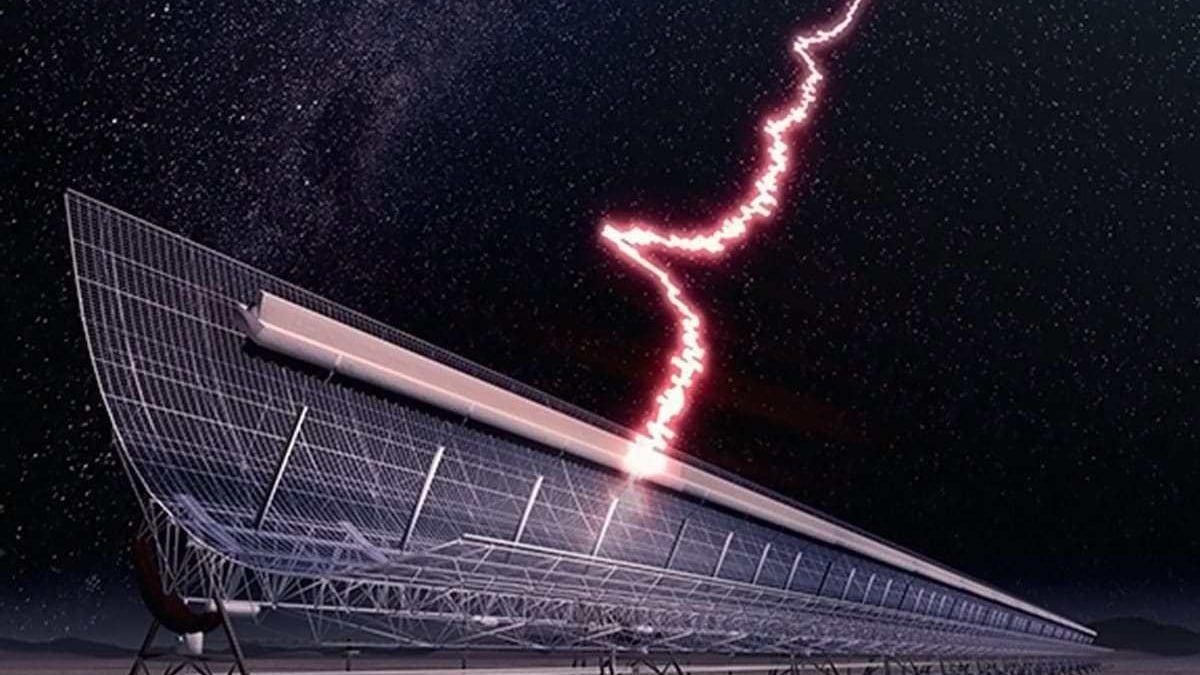Mysterious deep-space signals can now be picked up in real time
Artificial intelligence has been able to tune in to the odd energy known as Fast Radio Bursts and observe them as they reach Earth.

An artist's impression of the fast radio burst detected at the Molonglo Radio Telescope.
Over the past dozen years, scientists have been finding enigmatic, fleeting signals called fast radio bursts, or FRBs, by poring over previous observations for the bright blips that come from the other side of the cosmos. Now, for the first time, the powerful flashes of radio waves have been picked up the moment they arrive at Earth.
Doctoral student Wael Farah at Australia's Swinburne University of Technology developed an automated system that uses machine learning to capture FRBs in real time. The very first FRB was detected in 2007 within observations from 2001, and most other detections have also been made by reviewing data after the fact.
Exactly what FRBs are and where they come from remains one of the newest and most intriguing mysteries in space science. What we know is that they originate from very powerful sources on the other side of the universe -- we're talking billions of light years from us -- and last just milliseconds. Only a handful of FRBs so far have been observed to repeat themselves, a characteristic that makes them easier to trace to a source galaxy.
Farah said part of his motivation for studying FRBs is that they can be used to study the darker parts of the cosmos between galaxies that are otherwise almost impossible to see.
"It is fascinating to discover that a signal that traveled halfway through the universe, reaching our telescope after a journey of a few billion years, exhibits complex structure, like peaks separated by less than a millisecond," he said in a statement.
Farah's system has been used at the Molonglo Radio Observatory in Australia and has already identified five FRBs, including one of the most powerful ever picked up and one of the broadest yet. The details have been published in the September 2019 issue of Monthly Notices of the Astronomical Society.
The project team is hopeful that grabbing FRBs as they arrive will provide the clearest picture yet of the mysterious signals.
"Molonglo's real-time detection system allows us to fully exploit its high time and frequency resolution and probe FRB properties that were previously unobtainable," said project leader Matthew Bailes.
Possible explanations for FRBs range from powerful pulsars to advanced aliens. But now that we have artificial intelligence essentially locked in on their fleeting frequencies, the mystery is a step closer to eventually being solved.

